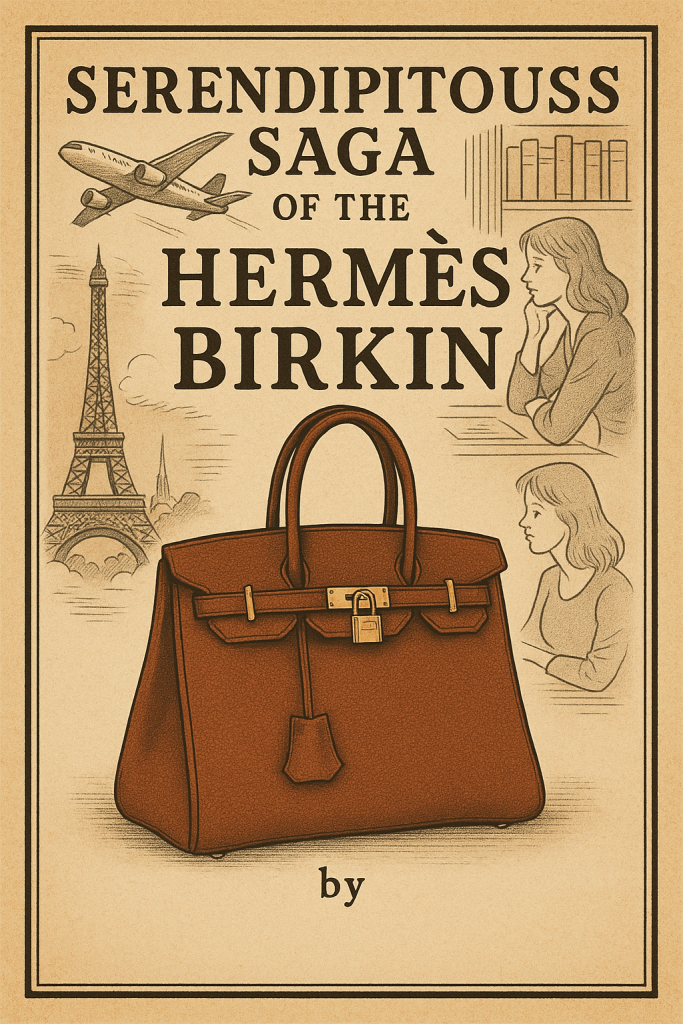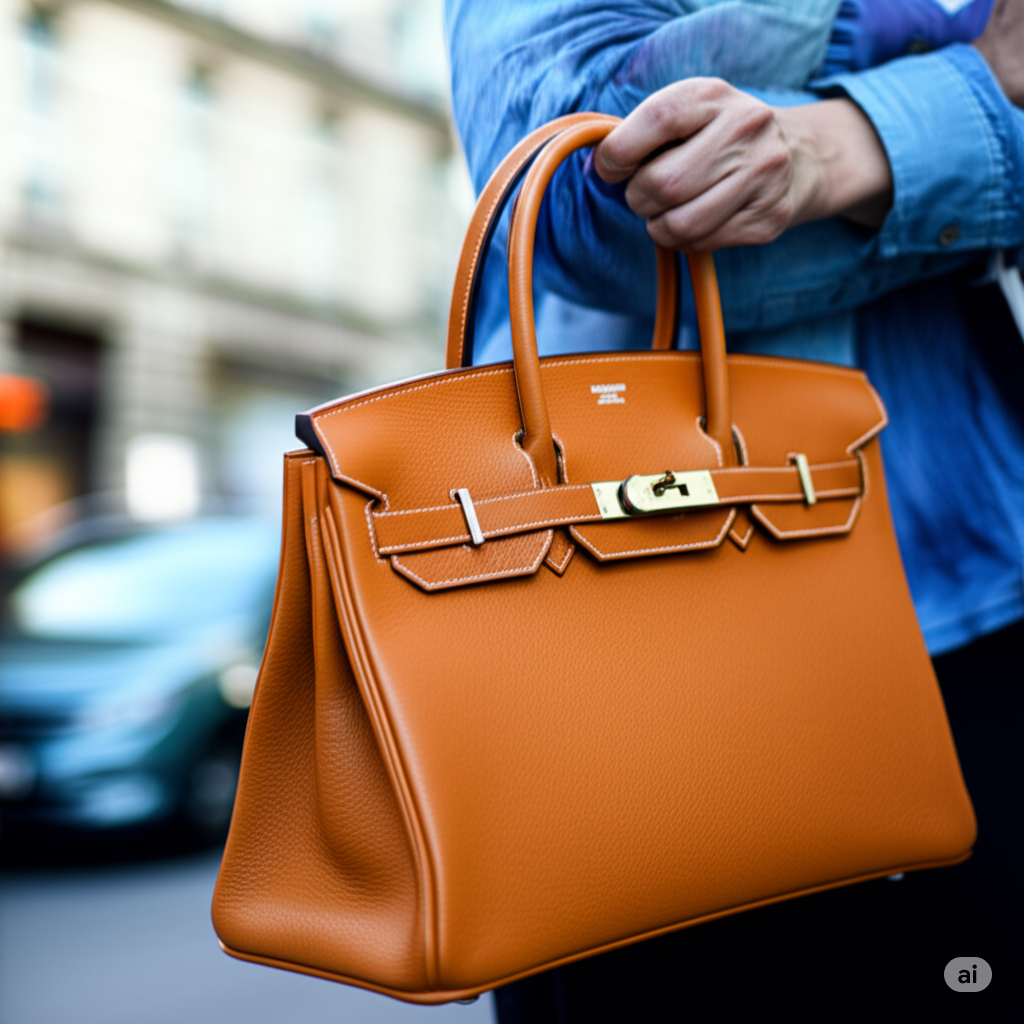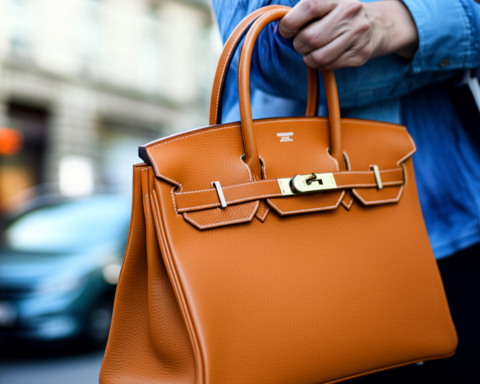In the rarefied air of ultra-luxury, few items command the same reverence, mystique, and astronomical price tags as the Hermès Birkin bag. It’s more than a mere accessory; it’s a statement, a status symbol, an investment, and for many, the ultimate fashion grail. But behind this icon of opulence lies a surprisingly practical and serendipitous origin story, starring the English-French actress, singer, and perennial style icon Jane Birkin, and a chance encounter on an airplane that would forever change the landscape of luxury handbags. This is the fascinating journey of how a simple need transformed into a global legend.
The Muse: Jane Birkin – An Icon of Effortless Chic
Before she became eponymously linked to the world’s most coveted handbag, Jane Birkin was already a well-established cultural figure. Rising to fame in the late 1960s and 70s, she epitomized a certain bohemian, “je ne sais quoi” Parisian chic, blended with her English anomie. Known for her long, flowing hair, bangs, mini-dresses, denim, and often, a simple wicker basket she carried everywhere as her handbag, Birkin’s style was effortless, individualistic, and charmingly unpretentious. She was the antithesis of the meticulously curated, logo-driven luxury that would later define the era her namesake bag would dominate. Her preference for the humble wicker basket, even for glamorous events, underscored her practical and somewhat whimsical approach to accessories.

The Fateful Flight: An Accidental Catalyst for Creation
The legend of the Birkin bag begins, as many great stories do, with a chance encounter. The year was 1981 (some accounts say 1983, though the bag was officially designed and released following this). Jane Birkin was on a flight from Paris to London. As she tried to stow her signature straw basket in the overhead compartment, its contents spilled out, scattering her belongings across the aisle.
Sitting beside her, unbeknownst to her initially, was Jean-Louis Dumas, the then-Executive Chairman and Artistic Director of Hermès. As Birkin gathered her things, she lamented to Dumas about her inability to find a leather weekend bag that was both chic and practical enough to hold all her essentials, especially as a young mother. She needed something larger than a Kelly bag (another Hermès icon named after Grace Kelly) but more structured and secure than her beloved basket.
Dumas, ever the astute businessman and visionary, listened intently. The story goes that he, or perhaps Birkin herself, began sketching ideas for a new bag on an airplane sick bag. She described her ideal: a spacious, rectangular holdall with a secure flap, comfortable handles, and enough pockets to keep things organized. It needed to be functional for daily use and travel, yet possess the understated elegance Hermès was renowned for.
From Practical Need to Bespoke Design
This airborne conversation was the genesis. Dumas invited Birkin to the Hermès ateliers to further refine the design. The primary driver was practicality – Jane Birkin’s practicality. She needed a bag that could cope with the demands of her life. The resulting design, which would be christened the “Birkin,” featured a capacious, rectangular body, two rolled handles for comfortable carrying, a distinctive flap closure secured by two sangles (straps) and a central turn-lock, a clochette (bell) concealing the keys, and four protective “feet” (clous) at its base.

The bag was designed to be left open for easy access if needed, yet secure when closed. Its spacious interior could accommodate a multitude of items, fulfilling Birkin’s original request. Crucially, it was crafted with the unparalleled attention to detail and exquisite materials that are hallmarks of Hermès. The first Birkin bag was presented to Jane in 1984.
The Meticulous Art of Creation: Hermès Craftsmanship
The transformation of the Birkin from a practical solution for one woman into a global luxury phenomenon is intrinsically linked to Hermès’s legendary craftsmanship. Each Birkin bag is handmade in France by a single, highly skilled artisan. This process can take anywhere from 18 to 25 hours, and sometimes significantly longer depending on the material and specific details.
Artisans train for years to master the specific saddle-stitching technique used by Hermès, which is renowned for its strength and beauty. The leathers are sourced from the finest tanneries worldwide, including Togo, Epsom, Clemence, and the classic Box Calf, each offering a different texture and durability. Exotic skins like crocodile, alligator, lizard, and ostrich are also used, contributing to the bag’s rarity and higher price points. The hardware – the lock, keys, buckle, and feet – is typically plated in gold or palladium, and sometimes even features diamonds. This commitment to artisanal production inherently limits the number of Birkin bags that can be produced, laying the groundwork for its exclusivity.
The Ascent to Icon: Scarcity, Celebrity, and Status
While the Birkin was well-received upon its launch, it wasn’t an immediate global sensation. Its cult status grew gradually throughout the late 1980s and early 1990s. However, the mid-to-late 1990s and early 2000s saw its popularity explode. Several factors contributed to this:
- Strategic Scarcity: Hermès never mass-produced the Birkin. The limited production, dictated by the time-consuming artisanal process, created a natural scarcity. This wasn’t initially a marketing ploy but a consequence of quality control, yet it became a powerful driver of desire.
- The “Waiting List” Mystique: The infamous “waiting list” for a Birkin, which could stretch for years, became legendary. While Hermès has stated that a formal list no longer exists, acquiring a Birkin directly from a boutique typically requires a significant purchase history and a good relationship with a sales associate. This elusiveness only amplified its allure.
- Celebrity Endorsement: As high-profile celebrities – from Victoria Beckham and Kim Kardashian to countless actresses and socialites – were photographed with Birkins in various colors and exotic skins, the bag became a potent symbol of wealth, success, and insider status. A pivotal moment was its feature in a Sex and the City episode in 2001, where Samantha Jones famously tries to bypass the five-year waiting list.
- The Veblen Good Effect: The Birkin became a classic example of a Veblen good – an item for which demand increases as the price increases, due to its exclusivity and appeal as a status symbol.
The Birkin Economy: An Investment in Leather
The intense demand and severely restricted supply have created a booming secondary market for Birkin bags. It’s not uncommon for Birkins, especially rare or highly sought-after models, to sell for significantly more than their original retail price at auctions and through high-end resellers.
Christie’s and Sotheby’s regularly auction rare Birkins, with some fetching hundreds of thousands, and in the case of the diamond-encrusted Himalayan crocodile Birkin, millions of dollars. Factors like the specific leather (exotics command higher prices), hardware (diamond-encrusted “bijoux” hardware is prized), color (rare or discontinued colors are valuable), size, and condition dramatically influence resale value. For many, a Birkin is not just a handbag but a tangible asset, an investment piece that has, in some studies, outperformed traditional investments like gold or stocks.
Jane Birkin and “Her” Bag Today
Ironically, Jane Birkin herself has always maintained a rather utilitarian and nonchalant relationship with the bag that bears her name. She is known for personalizing her Birkins with stickers, beads, charms, and even protest badges, treating them as well-loved, functional items rather than precious objects to be kept pristine. She has often auctioned her own Birkins for charitable causes, including Amnesty International and earthquake relief.
In 2015, she famously requested Hermès to remove her name from the crocodile version of the bag following concerns about the ethical treatment of the animals. Hermès responded by reaffirming its commitment to ethical sourcing and demonstrating the high standards of its partner farms, and the matter was resolved with Birkin satisfied with their reassurances. This incident highlighted her enduring connection to the bag, not just as a namesake, but as someone with a continued stake in its ethical representation.
More Than Just a Bag
The Hermès Birkin bag’s journey from a sketch on an airplane sick bag to its current status as the ultimate luxury icon is a remarkable tale of serendipity, impeccable craftsmanship, and the powerful dynamics of desire and exclusivity. It represents a unique intersection of practicality, artistry, and cultural cachet. Born from a genuine need expressed by an unconventional style icon, the Birkin has transcended its utilitarian origins to become a global phenomenon, a legend in leather, and unequivocally, so much more than just a bag.




